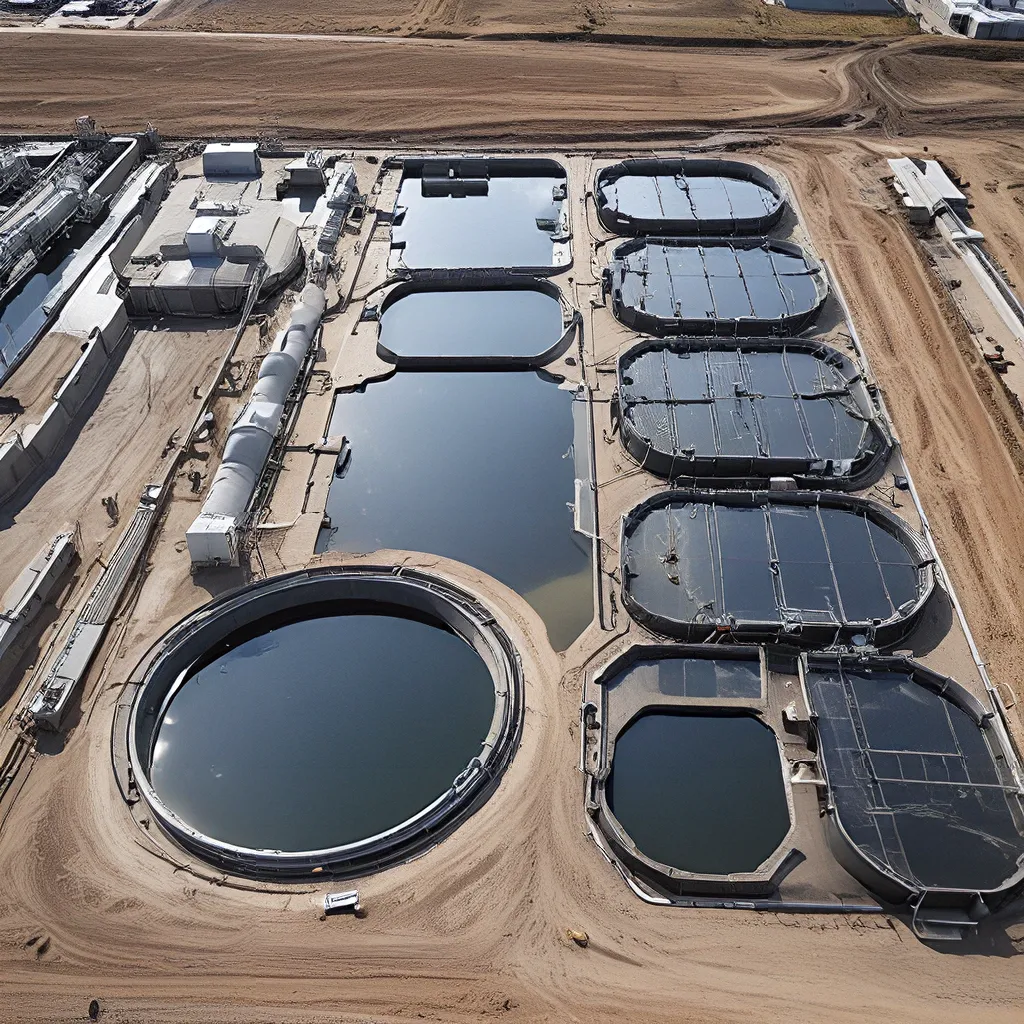
Harnessing the Power of Waste: A Renewable Energy Revolution
I’ll never forget the day I first learned about the incredible potential of wastewater treatment plants to generate renewable energy. It was like discovering a hidden treasure trove, a goldmine of untapped resources that could revolutionize the way we power our communities.
As I dove deeper into the topic, I was amazed by the sheer scale and versatility of these unsung heroes of the sustainability movement. Wastewater treatment facilities aren’t just cleaning up our used water – they’re transforming it into a renewable energy source that can power our homes, businesses, and even our aircraft.
It all starts with the vast amounts of biomass – things like manure, sewage sludge, and agricultural waste – that end up in our wastewater streams. Instead of letting this valuable resource go to waste, forward-thinking wastewater treatment plants are finding innovative ways to capture and convert it into biofuels and renewable chemicals.
The U.S. Department of Energy’s Bioenergy Technologies Office has been at the forefront of this movement, working with industry partners and government agencies to develop a comprehensive strategy for scaling up new technologies to produce sustainable aviation fuel (SAF) from renewable and waste resources.
Powering the Skies with Wastewater
One of the most exciting developments in this space is the use of wastewater-derived fuels to power aircraft. SAF made from renewable biomass and waste resources has the potential to deliver the same performance as traditional jet fuel, but with a fraction of the carbon footprint.
This is a game-changer for the aviation industry, which is under increasing pressure to reduce its greenhouse gas emissions. The demand for jet fuel is expected to balloon over the next three decades, and SAF can help meet the goals for cutting emissions from both domestic and international air travel.
Recent research has shown that some emerging SAF pathways even have a net-negative greenhouse gas (GHG) footprint, meaning they can actually remove more carbon from the atmosphere than they emit. This is a remarkable achievement and a testament to the ingenuity of the scientists and engineers working to revolutionize the aviation industry.
But the benefits of wastewater-to-energy don’t stop there. Many SAFs contain fewer aromatic components, which means they burn cleaner in aircraft engines and produce lower local emissions of harmful compounds around airports during takeoff and landing. This can have a significant positive impact on air quality and public health in communities near major airports.
Powering the Grid with Wastewater
While the aviation industry is undoubtedly a crucial target for wastewater-derived renewable energy, the potential applications extend far beyond the skies. Wastewater treatment plants are also becoming hubs of electricity generation, using the biogas produced from the digestion of organic matter to power their own facilities and even feed excess energy back into the grid.
The Office of Energy Efficiency and Renewable Energy has been at the forefront of this effort, supporting research and development to overcome the barriers to widespread deployment of these technologies.
By integrating wastewater treatment and renewable energy production, we can create a closed-loop system that maximizes the efficiency and sustainability of both processes. Wastewater treatment plants can become self-sustaining, energy-positive facilities that not only clean our water but also power our communities with clean, renewable energy.
Unlocking the Potential of Waste
The real beauty of this approach lies in its ability to transform waste into a valuable resource. Instead of treating wastewater as a problem to be dealt with, we can reframe it as an opportunity to create new economic and environmental benefits.
Biomass crops grown for SAF production can provide farmers with additional income during off-seasons, while also improving soil quality and reducing nutrient losses. Producing SAF from wet wastes like manure and sewage sludge can reduce pollution pressure on watersheds and keep potent methane gas out of the atmosphere, further contributing to climate change mitigation efforts.
As the United States continues to be the largest producer of biofuels in the world, the expansion of domestic SAF production can help sustain the benefits of our biofuel industry and forge new economic opportunities across the country. From feedstock cultivation to biofuel refining and distribution, the wastewater-to-energy revolution has the potential to create thousands of new jobs and bolster local economies.
The Future of Wastewater Treatment
The integration of wastewater treatment and renewable energy production is not just a lofty idea – it’s a rapidly evolving reality that is transforming the way we think about waste and sustainability. As the demand for sustainable solutions continues to grow, I believe we will see even more innovative approaches and technological breakthroughs in this space.
At Alpha Wastewater, we are committed to staying at the forefront of this renewable energy revolution. Our team of experts is constantly exploring new ways to maximize the efficiency and sustainability of our wastewater treatment processes, always with an eye towards harnessing the power of waste to create a cleaner, more resilient future.
So, the next time you flush the toilet or run the sink, take a moment to imagine the incredible potential that lies within that seemingly mundane act. Because in the world of wastewater treatment, there is no such thing as waste – only untapped energy waiting to be unleashed.